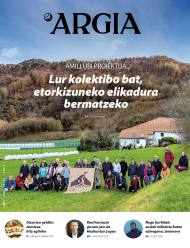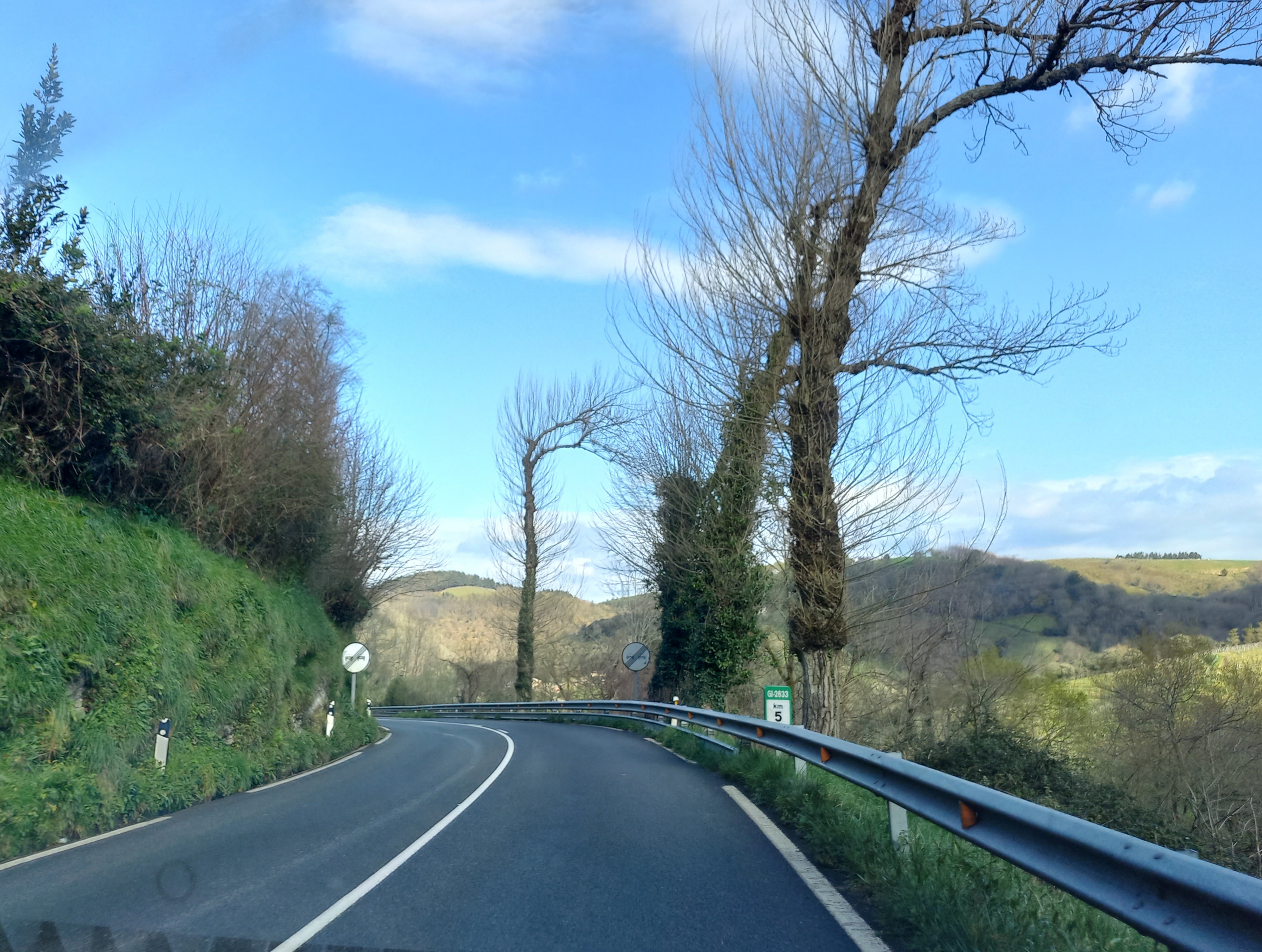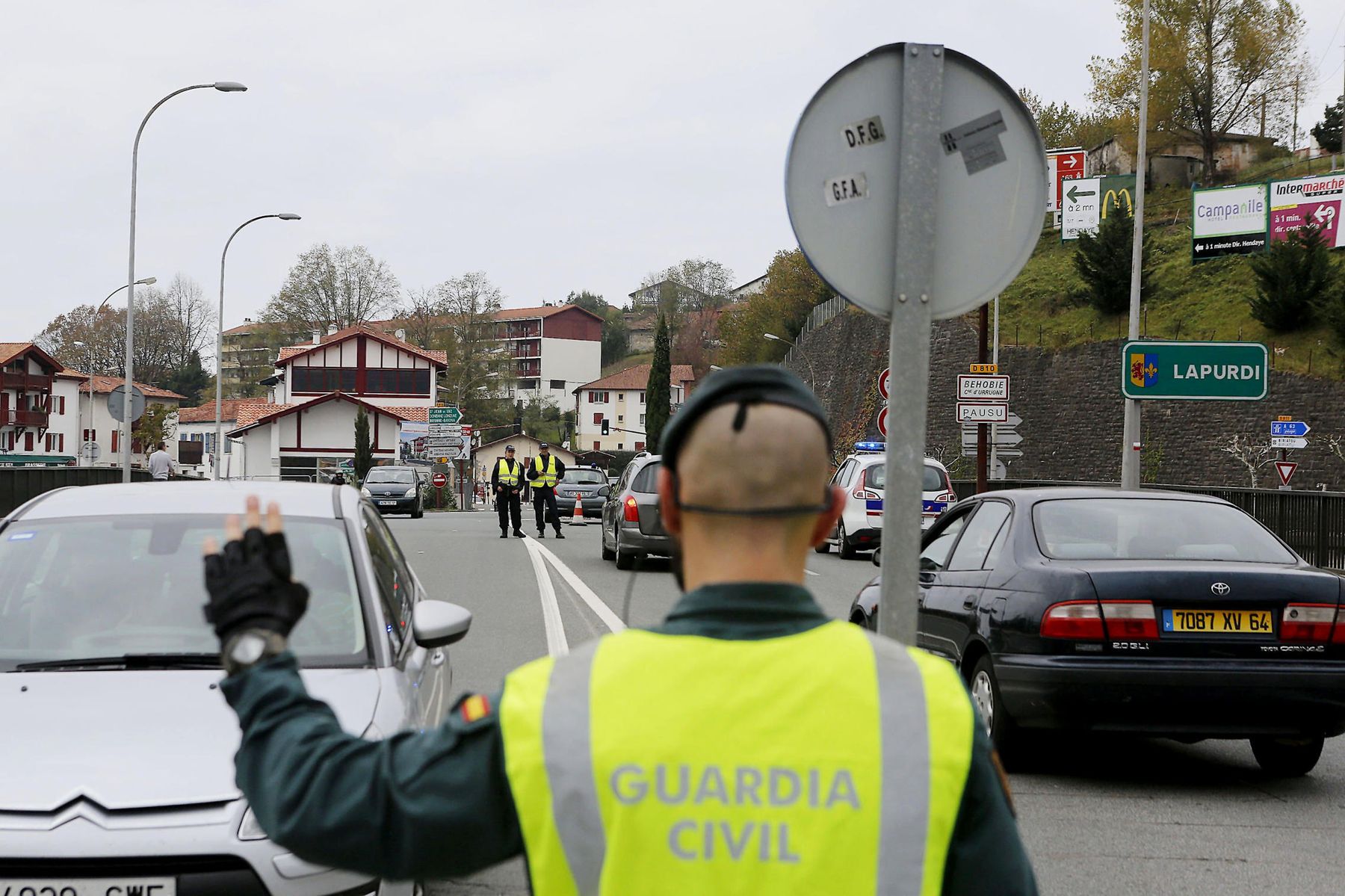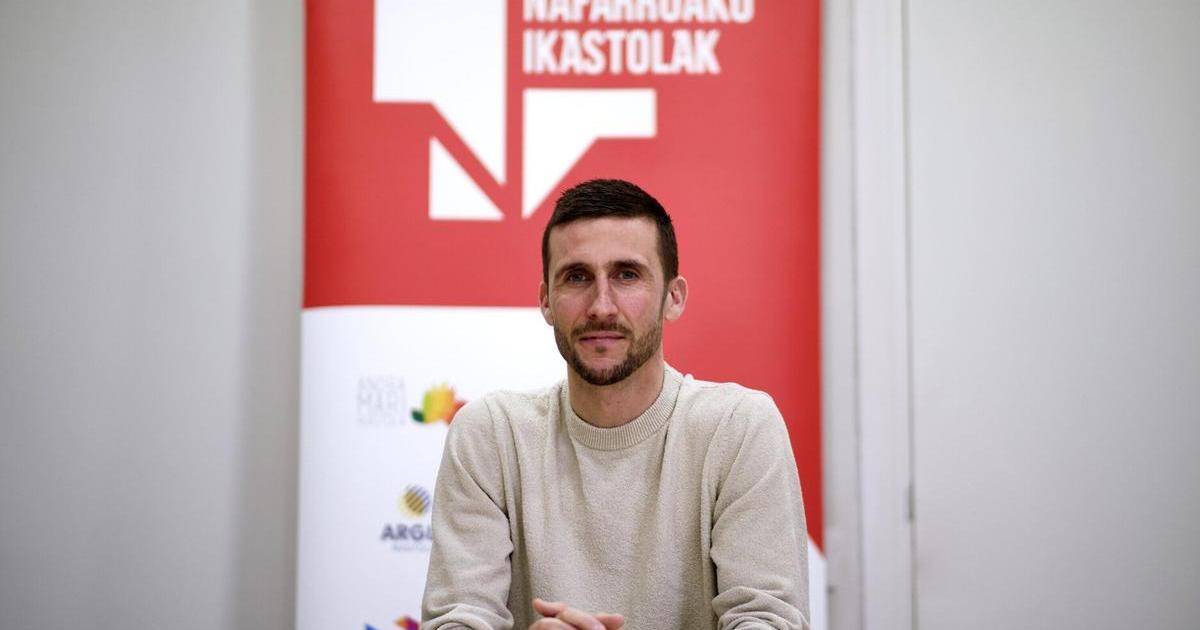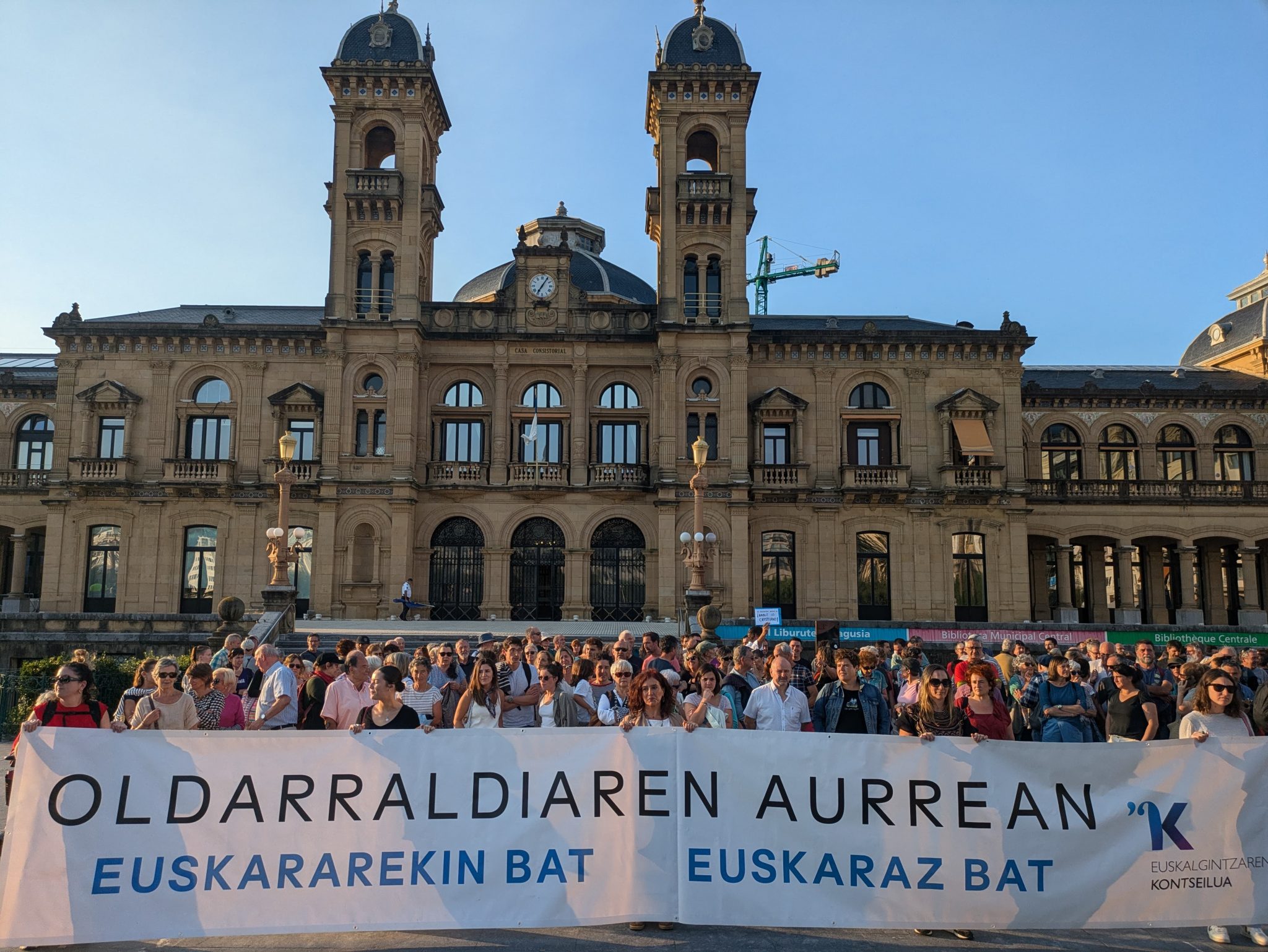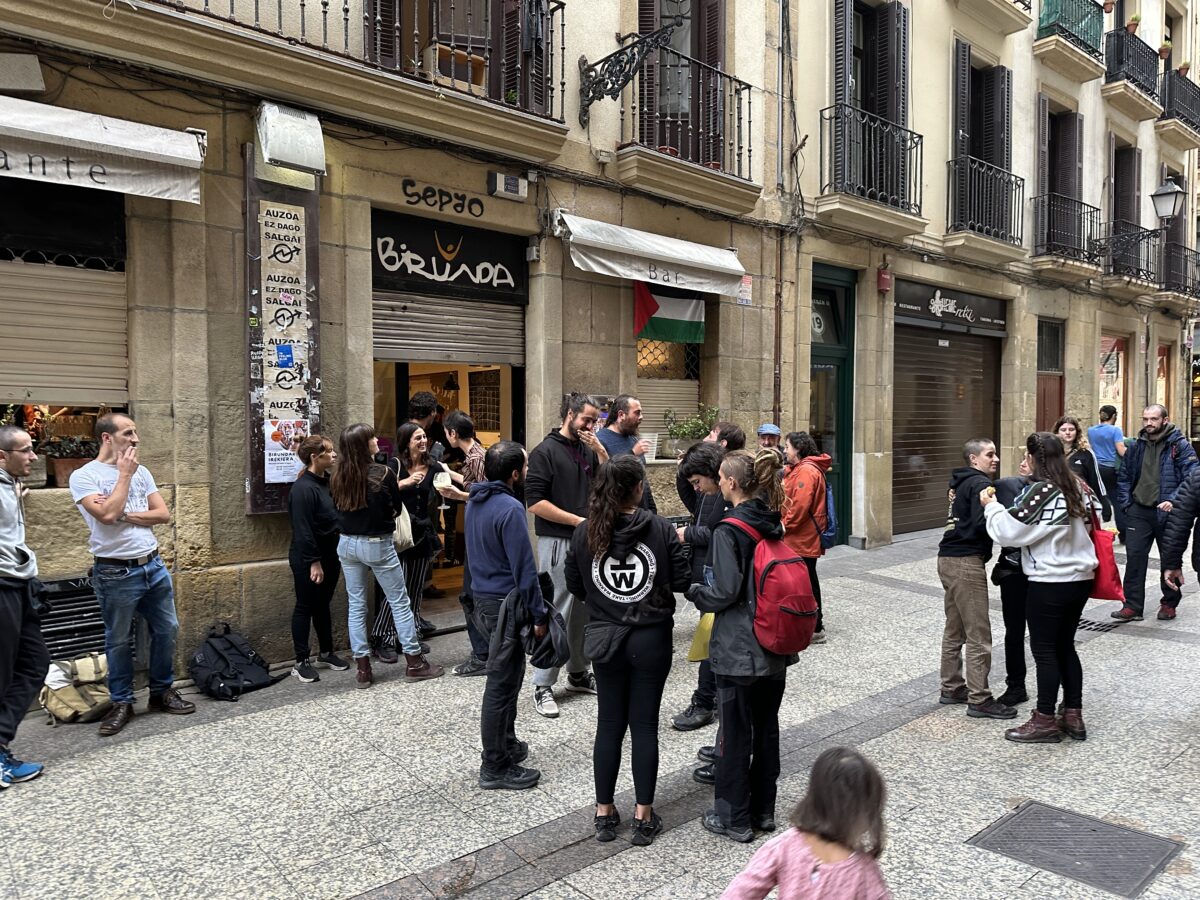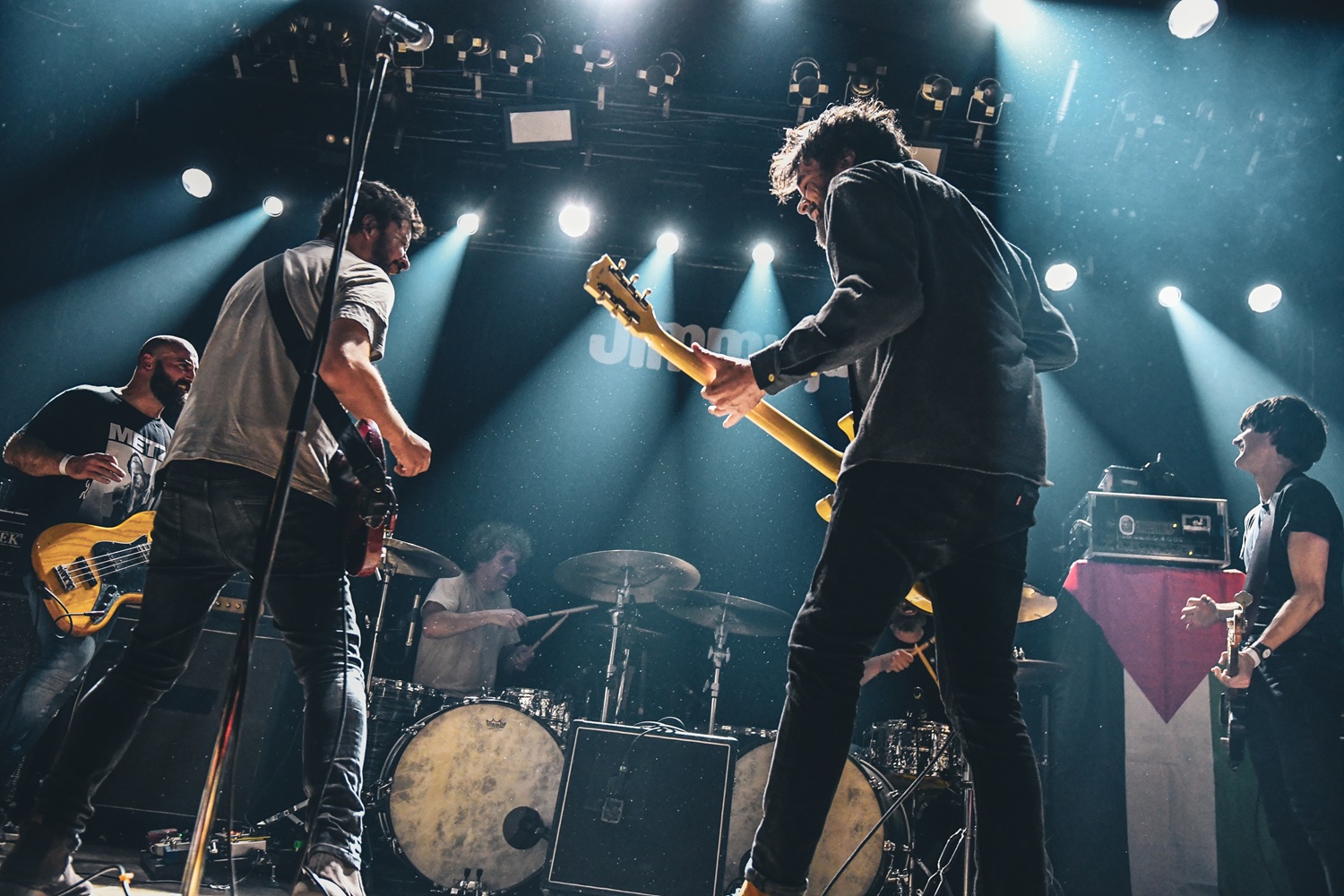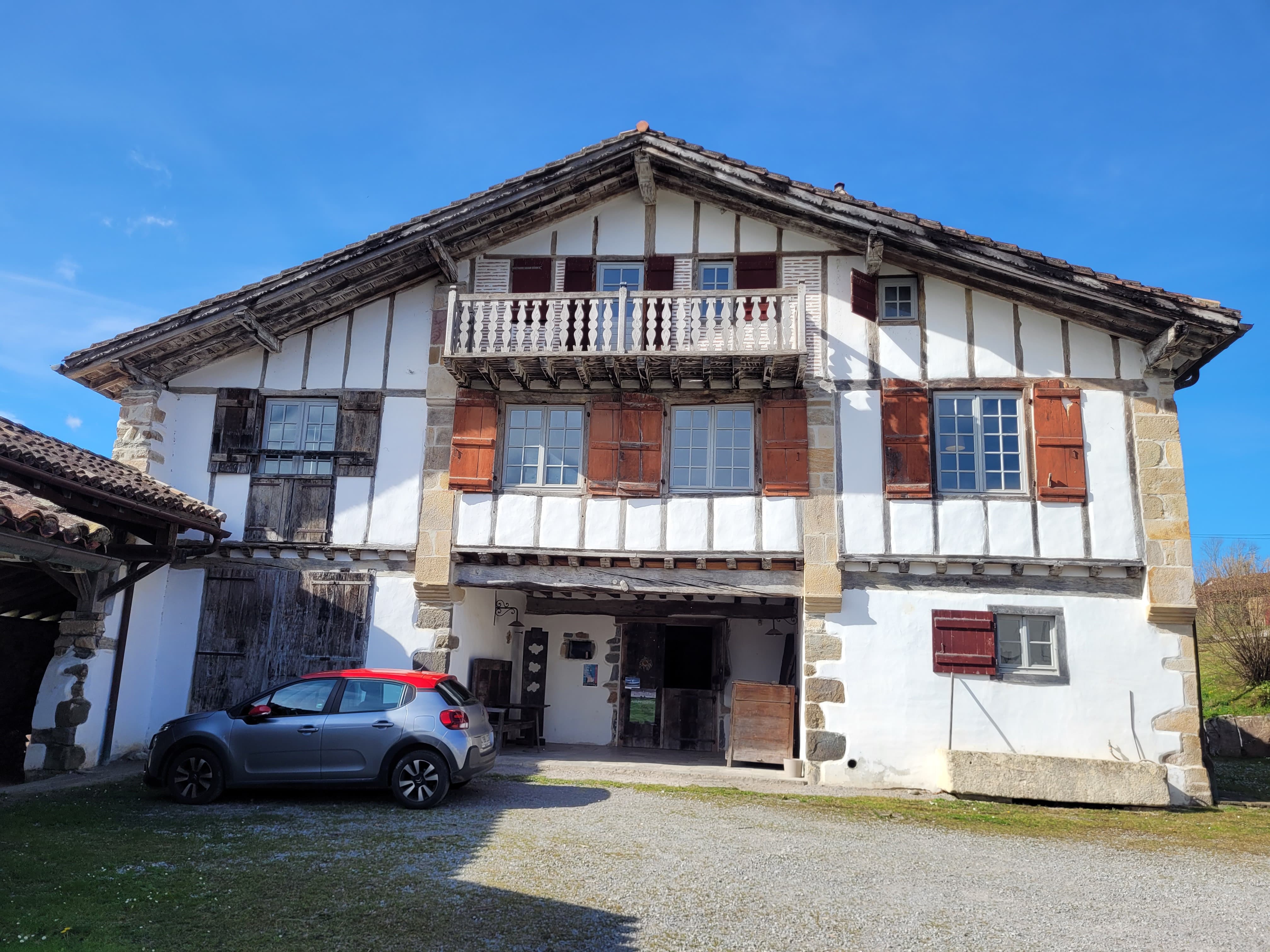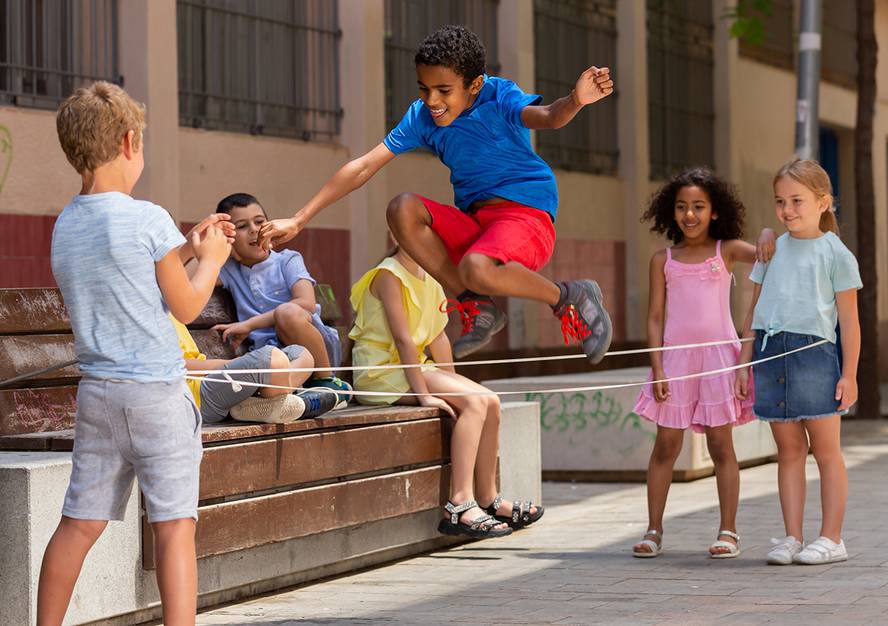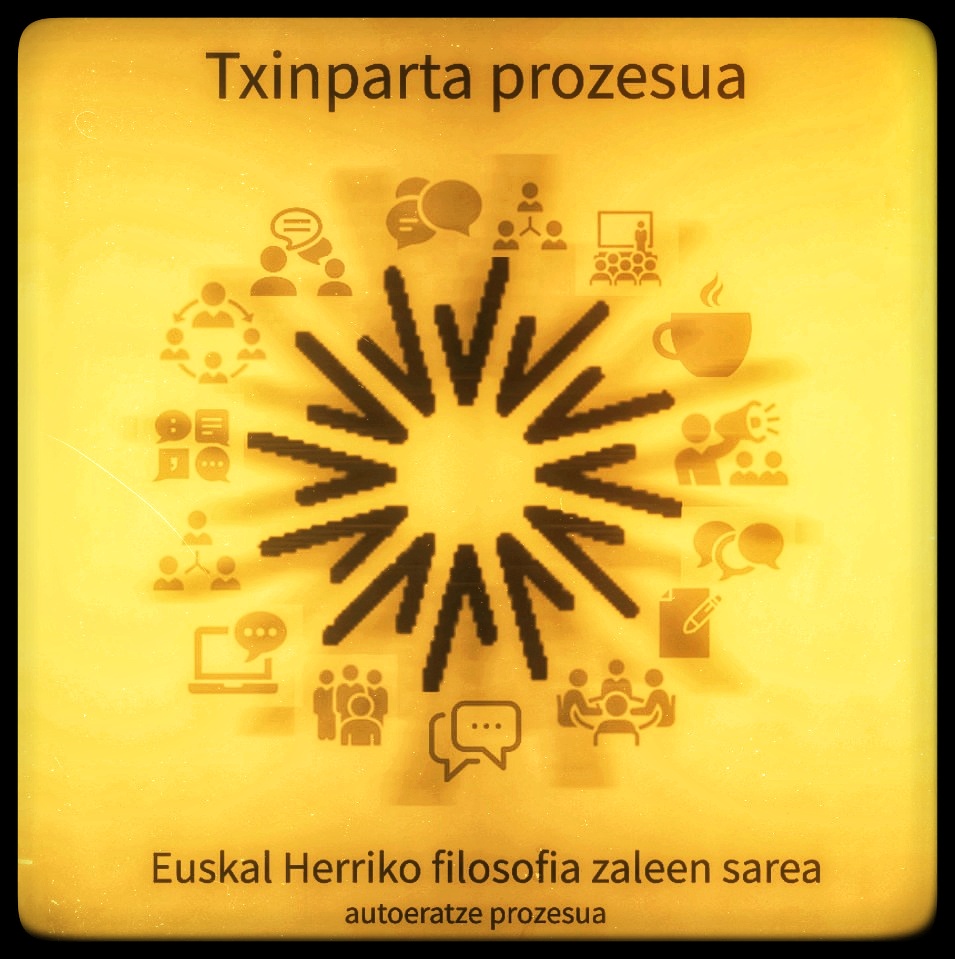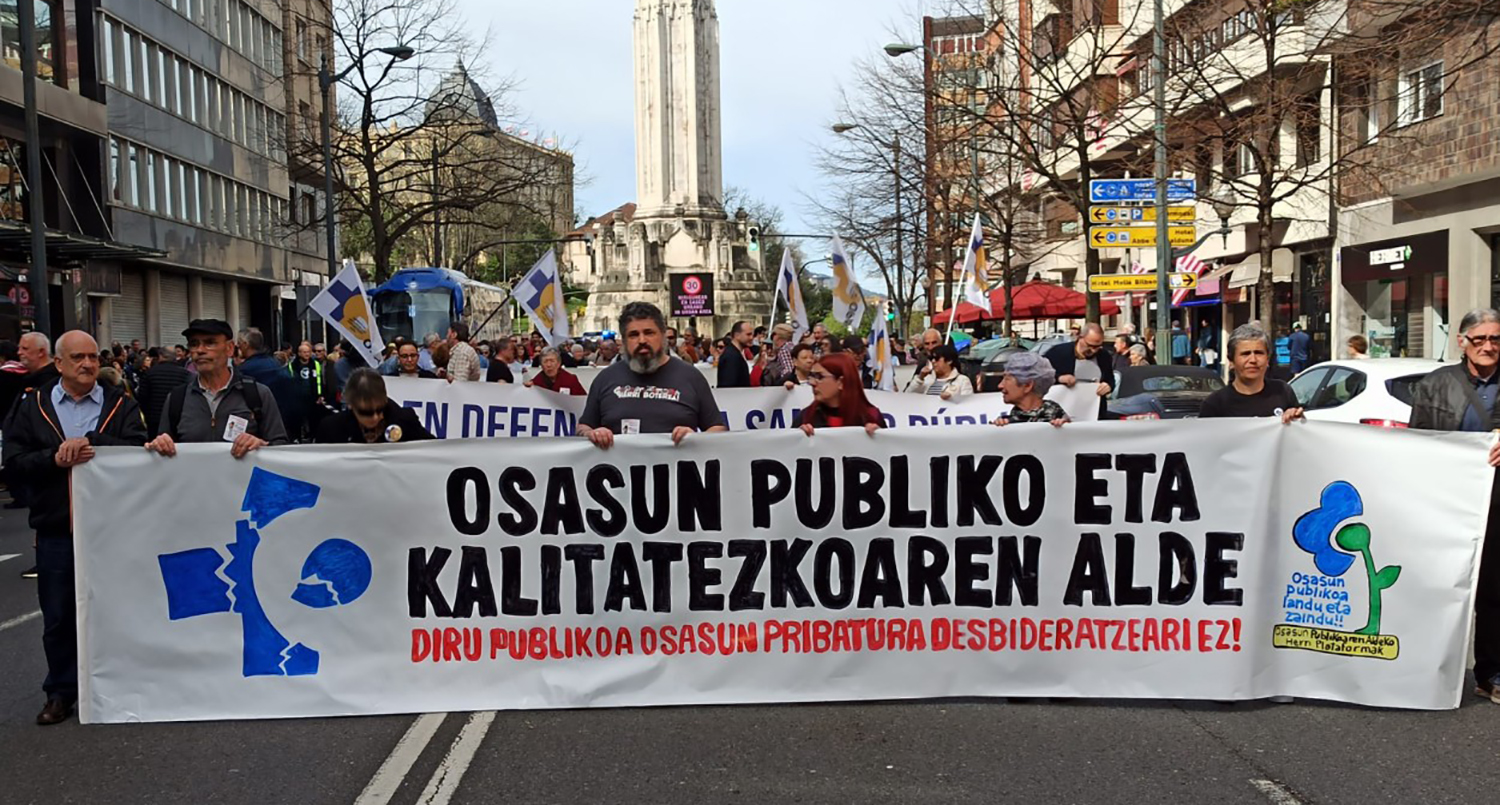“Thanks to friends, punkis and more nomadic people I have seen that it can be stitched differently”
- With the aim of weaving networks between women and dissident genres, Paula Santos created with a friend the collective Har-harika. For a year they have met in Zeberio (Bizkaia) to sew. Santos says: “We want to convey that with the sewing machine you can create anything.”
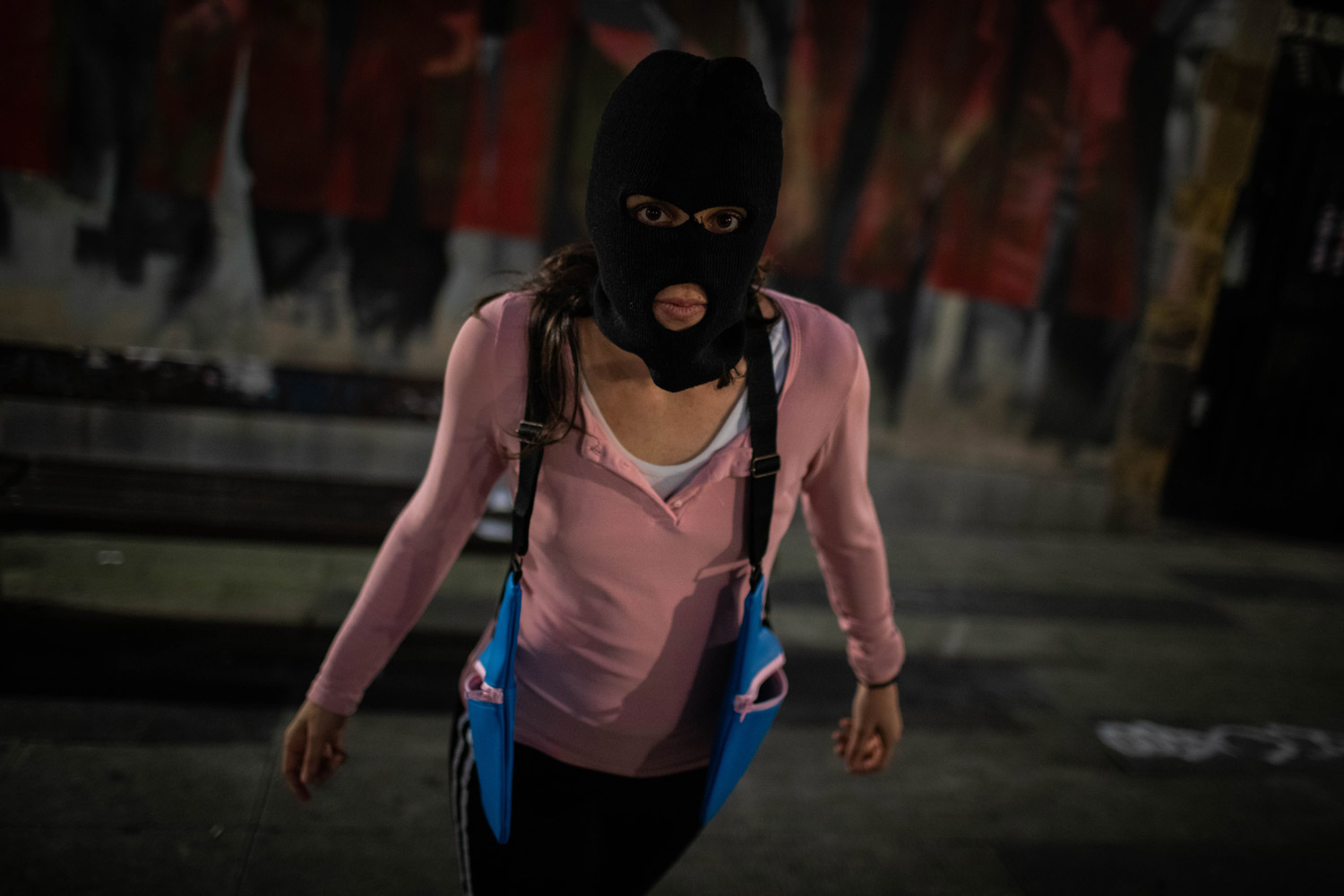
“Josteak ez dit inoiz atentzioa eman, baina behin lagun batek galdetu zidan ea berarekin joan nahi nuen Bilboko Truca Rec tailerrera. Ordutik, gustua hartu nion eta tailerrak ematen eta antzerkirako jantziak egiten hasi nintzen. Baina, gero, tailerra itxi zuten. Uste dut gustua hartu niola joskintzari sarean delako, nire lagun minarekin nagoelako, imajinazioa lantzen dugulako, eta kontzientzia politiko bat dugunez, ez dugulako beste denda batzuetan erosi nahi. Hasieran prakak egin nituen, eta ongi atera zirenez, gitarra zorro bat egiten saiatu nintzen. Hiru hilabetez aritu nintzen, baina lortu nuen”.
With what purpose did you create the
Har-harika collective?To change the imaginary around sewing and to make a network of dissident women and genres. We saw, for example, that many migrant women know how to sew, but they have no chance of working or sewing. So our idea was to create a space of learning and help for everyone.
What does the imaginary look like?
At first I wasn't attractive because I thought it would be very boring to walk in and stand. But thanks to my friends, the punkis and the most nomadic people, I've seen that it can be stitched differently, and it's not just women's stuff. So we want to convey that we can do what we want with a sewing machine.
So do they especially develop creativity?
Yes. However, it's important to become aware, blink and do things like this, because it helps people.
How does the network work?The first
objective was to have the workshop in Zeberio to leave a bit of Bilbao. We open the market we have in Arkulanda and we come together to sew. For example, because there's a person who has done the stitching diplomature, we've learned to put zippers on it. The idea is to ask the City Hall for a workshop.
Where do you get recycled material from?
People bring us everything. What's fine is delivered to those on the Welcome Refugees platform or to the Karmela space exchange room. The rest of us use it to transform it. For example, with the fabrics of a inflatable company we have made colored belt bags. It was the first time I used this material.

You do not use material of animal origin. Do you think the use of leather is widespread in crafts?
Yes. Leather is very difficult and also a specialist. Non-use has political and personal facilities. The use of leather has been closely linked to ancient traditions. Many times they say it lasts a lot, and it's true, but the fabric of the swollen ones is stronger than the skin and is recycled. Furthermore, it does not harm anyone. However, it is difficult to sew.
You make punk sewing, self-managed and transfeminist, is there a political project behind besides sewing?
Our intention is to extend the project to women's homes and empowerment schools. We rely on transfeminism, because we believe that more things are created by relying on and exchanging.
Do you think the collective can help the people?
Yes, because we are offering culture. Although there are many things in Zeberio, for example, dance and language classes, there is not much to do with craft. We want to create a service for the people, with weekly repairing workshops.
To finance, they sell bags of belts and portfolios of pistols. Is the use of gun covers increasing?
The aim of the sale is to create a fund for the collective that allows to buy a number of things. Even if recycled material is used, things must always be bought. As I normally use guns, and I was out of money, I had to make a mistake for myself. So I made a pattern with my partner's gun. Since then, they started asking for friends. In addition, there are not many opportunities in the Basque Country. You see them at very specific fairs. However, the audience is very concreto.Tambi you
have moved away from the traditional aesthetic of pistols. Have they done so voluntarily?
We have to be a little daring. Because we really like colors and we create according to what we have, we try to introduce colors. However, as the Basati collection was the first, it became animal print [with skin pattern and coat of animals], because everyone follows that aesthetic. We saw it sold and we started making it more colorful.
Did the ACAB collection come from there?
Yes. As we had colorful scarves, we created the ACAB All Colours Are Beautiful collection. Three years ago we used the money to pay fines for COVID-19 and to make a resistance box.
What you do you open up through Instagram, is it a showcase?
Yes, that's why we did it; I don't have any other social network. We prefer the oral, but it does not go that far. However, so far we have adapted very well to oral generalization; in the people, interest has been easily awakened.
Why don't you want to show your face on social media?
Although we believe between the two, the goal is for more people to come and be part of a collective. We do not want to show our face, because we do not want to appropriate the political. In addition, we want to show that anyone can take it to the pistol, it doesn't have to be punk, a serious anarko or a modern person.
Goizean jaiki orduko hasten dira desegokitasunak. Beharbada lotarako erabili duzun lastaira ere ez zen egokiena. Baina, ezin ba idatzi desegoki sentiarazten nauten guztiez. Horregatik, udaberriko ekinozioa –egunaren eta gauaren arteko oreka– dela eta, oraindik ere,... [+]
Guardia Zibilaren historia bat - Hemendik alde egiteko arrazoiak izenburupean, datorren astean argitaratuko dugun 305. LARRUN aldizkariaren pasarte batzuk dira ondorengoak, erakunde armatuaren sorrera garaietan girotutakoak.
Rosa Zarra Ertzaintzaren pilotakada baten ondorioz hil zela da Eusko Jaurlaritzako Poliziaren Biktimen Balorazio Batzordeak atera duen ondorioa, Berria-k jakinarazi duenez. Orain arte, Ertzaintzak beti egin dio uko bertsio horri, eta Rosa Zarra berak zuen gaixotasunaren ondorioz... [+]
Nafarroako Ikastolen Elkarteak lehendakari berria du. Oier Sanjurjok hartu dio lekukoa Elena Zabaleta Andresenari. Beste zazpi kide izanen ditu alboan Sanjurjok.
ELA sindikatuak azaldu duenez, azken Lan Eskaintza Publikoaren oinarrien arabera, Ertzaintzarako eskainitako lanpostuen %20ak eta Udaltzaingoaren %30ak ez daukate euskara-eskakizunik. Gasteizen, adibidez, udaltzain-lanpostuen erdietan, 24tan, ez dago euskara-eskakizunik.
Ustez, lokalaren jabetza eskuratu dutenek bidali dituzte sarrailagileak sarraila aldatzera; Ertzaintzak babestuta aritu dira hori egiten. Birundak epaiketa bat irabazi du duela gutxi.
Inoren Ero Ni + Lisabö
Noiz: martxoaren 14an.
Non: Gasteizko Jimmy Jazz aretoan.
----------------------------------------------------
Izotz-arriskuaren seinalea autoko pantailatxoan. Urkiola, bere mendilerro eta baso. Kontzertuetara bideko ohiko errituala: Inoren... [+]
Euskalgintzak Senpereko Larraldea etxea faltan botako du. Uda gabe, Bertsularien lagunak, bertan gelditzen den azken elkarteak, lekuz aldatuko du eta etxea hetsiko dute. Euskararen, euskal kulturaren eta arteen ohantzea izan da Larraldea, urte luzetan Andoni Iturrioz mezenasak... [+]
Berrogei urte dira Euskal Herrian autismoaren inguruko lehen azterketak eta zerbitzuak hasi zirela. Urte hauetan asko aldatu da autismoaz dakiguna. Uste baino heterogeneoagoa da. Uste baino ohikoagoa. Normalagoa.
Txinparta izeneko prozesua Martxoaren 21ean hasiko da eta urte bete iraungo du. "Udaberriaren hasierarekin batera proiektu herritar berri bat" aurkeztu nahi dutela adierazi dute.
PP, Vox, Junts eta EAJren botoekin Espainiako Kongresuak onartu du otsoa espezie babestuen zerrendatik ateratzea eta, horren ondorioz, berriz ehizatu ahal izango dute Duero ibaitik iparrera.
Itxaron zerrendak gutxitzeko Osasunbideak hartutako estrategiak gaitzetsi ditu Plataformak









